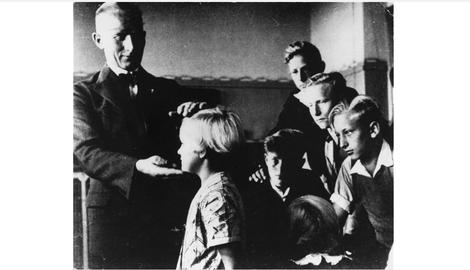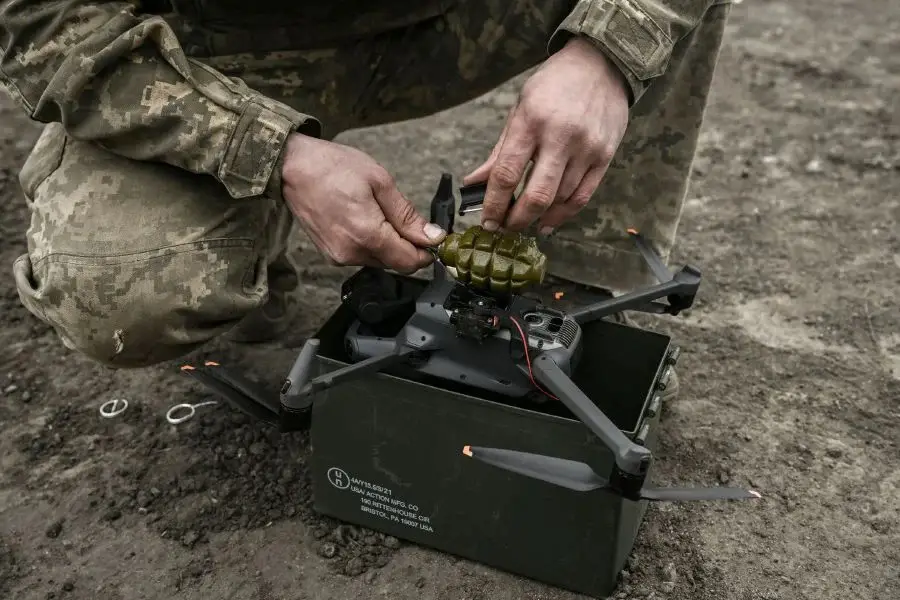The narrative around refugees and asylum seekers across the globe appears politically insinuated.
 Drowning in the Sea: Artwork by Faud, 14, a Syrian refugee. Black dots depict refugees in a stormy sea Courtesy: Art with refugees
Drowning in the Sea: Artwork by Faud, 14, a Syrian refugee. Black dots depict refugees in a stormy sea Courtesy: Art with refugees

UPDATED: 26 JUL 2023 8:04 AM
Recently on July 7, 2023, the Dutch government collapsed over radical yet opposing outlooks of coalition parties on the issue of a proposed new immigration policy. The mounting concerns over the problem of a housing crisis, high gas prices and inflation are developing a narrative that blames foreign migrants—international students, wealthier “expats” and particularly asylum seekers as the key cause. It has ensued into the formation of a policy proposal, pressing the Dutch government to introduce a new bill that appears to restrict the rights of family members to join refugees from countries temporarily at war.
The difference in the views of coalition parties over this new bill caused the collapse of the government. Akin to or even harsher than such a policy, the United Kingdom has already devised a plan to send asylum seekers to Rwanda to ‘deter’ people from arriving in the UK. Notably, such a pattern indicates the upsetting concerns and narratives that are appearing against the “soaring outsider” in Europe, especially refugees and asylum seekers.
The subject that attracts less attention is the extent to which the refugees and asylum seekers are increasing the humanitarian cost or inflation of a state, and forcing countries to bring intense policy frames against the rights of refugees and asylum seekers. According to the United Nations Human Rights Council (UNHRC), in 2022, 108.4 million people were forcefully displaced worldwide because of persecution, conflict, violence, human rights violations or events seriously disturbing public order. Among these, 35.3 million (32.5 per cent) were refugees and 5.4 million (4.9 per cent) were asylum seekers. Should 5.4 million asylum seekers among a population of seven billion worldwide be a cause of concern; and can’t the economically powerful states (including European countries) even offer to provide assistance to a minute proportion of them, rather than render strident policies, and how are such minor populations destabilising economies, politics, and increasing inflation?
European Union statistics further indicate that the narrative and panic about refugees and asylum seekers appear politically insinuated, and not what the data suggests. For instance, in 2022, only 881,200 people sought asylum among all the countries of the European Union (EU). Should a minute population of 881,200 people among 447.7 million inhabitants in the European Union be a concern?
Compared to worldwide forceful displacement data of UNHRC, the number of asylum seekers amounts to merely 0.81 per cent (approximately). However, the EU data also suggest that there is a sharp rise of 52 per cent in asylum in 2022 in European countries, as compared to the previous years, which appears to have been triggered by the war in neighbouring Ukraine.
Nevertheless, it is still a smaller amount as compared to the worldwide forceful displacement of people and asylum seekers. More importantly, the EU data also show that non-EU citizens are overrepresented in low-end and working- class occupations such as cleaners and helpers (11.4 per cent), personal services workers (7.3 per cent), personal care workers (5.5 per cent), building and related trade workers, excluding electricians (6.1 per cent), labourers in mining, construction, manufacturing and transport (six per cent, food preparation assistants (2.6 per cent), agricultural, forestry and fishery labourers (2.4 per cent), while being underrepresented in comparatively privileged sectors such as public administration and defence, compulsory social security, education, human health and social work activities, professional, scientific and technical activities, teaching professionals, business and administration associate professionals, etc. While it indicates the disparity and inequality of representation and scope of work of non-EU citizens, it also accentuates the extent to which the refugees and asylum seekers are impacting the economy of the host countries in Europe. Relatively, it suggests how non-EU citizens contribute to the working class economy of the EU, reflecting the limited scope of influence and representation of refugees in the EU, challenging the dominant perspective.
The Refugee Perspective
At the receiving end, the community of refugees and asylum seekers in Europe appears to have experienced multiple obstacles, hierarchies, and discrimination. For instance, in one of my podcast episodes on European Union refugee policies on the Global Development Review Podcast, Anila Noor, a refugee herself and feminist activist, who closely works with the UN and EU on refugee rights, shared that refugees and asylum seekers are treated and recognised as a ‘burden’ in Europe, which undermines the human dignity and contribution of refugees. She further pointed out that there is a disconnect and deficit between policies, policymakers, and rights groups, restricting the refugees’ equal participation and voices for policies that are sought for them. She pointed out that rather than a human rights approach, there is a rise of border control approach in the recent policy reforms in Europe. Her key concern, as representative of a refugee networks in Europe, was that there is not enough space for refugees to share their views and contribute to the policies. Rather, a tokenistic approach—involving a few community members for the sake of representation—is being applied and observed, which benefits neither the state nor the communities. She insists, ‘Listen to us, our experience, our perspectives’.
Framing Refugees And Asylum Seekers As A ‘Burden’ Increases The Risk Of Harm To The Already Susceptible Groups.
My own observations and experience of ethnographic research and community engagement with undocumented workers, refugee groups, and working class migrants in Europe also signify that there are challenges that require policy and practice reforms in a way that provide safe, secure, and dignified access to the basic rights of refugees and migrants in Europe, not stern policy modifications.
For instance, I observed that refugees and undocumented migrants are facing obstacles in accessing proper health care services or benefits and the bureaucracy (with a systemic discriminatory attitude) offers limited space for refugees to access work, livelihood, employment, and welfare benefits. The housing crisis and rising prices also led to further financial worries and compromised living conditions. Lack of mental health support, disconnect with families/diaspora, and language barriers also appear to have been impacting the daily routines, well-being and experiences of refugees and asylum seekers. Notably, waiting and regular pushbacks at asylum and reception centres have also made refugee and asylum-seeking communities more susceptible, requiring them to explore alternative channels of access, which are unsecured, financially extractive, and exploitative in many forms.
Such pushbacks appear to have also been subtly placed in the recent policy attempt of the Dutch government or the UK’s plans (among others) that restrict the entry of refugees or their families. Such a pattern may also be observed in future policies in other countries of the European Union.
Yet, framing refugees and asylum seekers as a “burden” or “soaring outsiders” increases the risk of harm to already susceptible groups, communities, and individuals, who are escaping from persecution, conflict, violence, human rights violations, or events seriously disturbing public order. While such framing may well benefit the politics and dominant narrative-building machinery to convince their anti-immigrant constituencies for domestic discourses or other gains, practically, it places a minor and repeatedly marginalised community of refugees and asylum seekers at the further threshold of the margins, increasing their susceptibilities and weakening their fundamental rights, even in the projected “advanced” democracies of Europe.
(Views expressed are personal)
(This appeared in the print as 'Striking Difference')
Jaffer Latief Najar is an ethnographer associated with the International Institute of Social Studies at the Hague in The Netherlands as a final year PHD researcher






